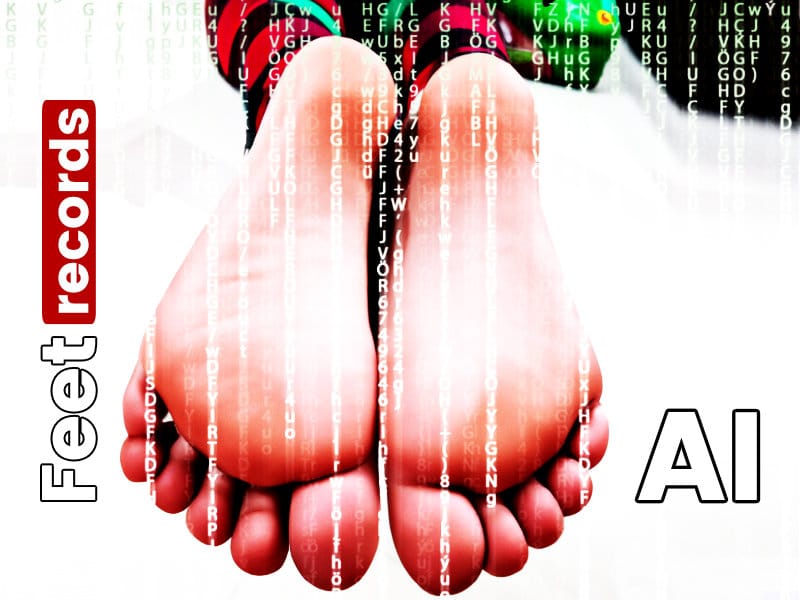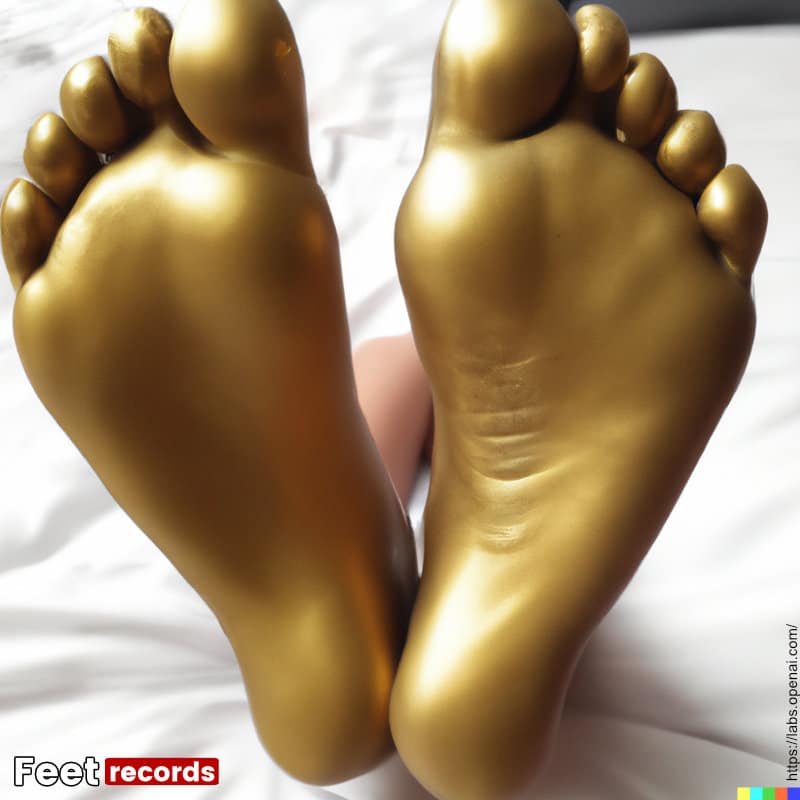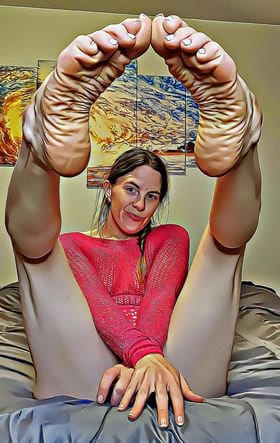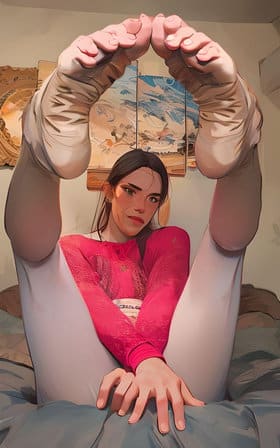Introduction
Artificial Intelligence (AI) has taken the world by storm, revolutionizing various industries and opening countless possibilities. One of the fascinating areas of AI is image generation, where machines can create incredibly realistic images from scratch. However, this technology is not without its difficulties, especially when it comes to accurately depicting limbs. A real major dilemma for foot enthusiasts. In this blog post, we explore the fascinating world of AI image generation, address the challenges #AI faces in rendering AI-generated foot fetish images. Finally, we discuss the AI used by #footfetish content creators, where the challenges lie and what the foot fetish community is saying about it.
AI imaging: A brief overview
AI imaging is an innovative field based on deep learning models such as Generative Adversarial Networks (GANs) and Variational Autoencoders (VAEs). These algorithms are trained on huge data sets of real images to learn patterns and generate new images that appear indistinguishable from real images. The uses of this technology are diverse, ranging from creative art to realistic CGI in films and video games.
AI brings many possibilities to create content
AI image tools have revolutionized the way content creators approach their craft, offering a wide range of capabilities that empower them to generate new and captivating visuals. These tools leverage advanced machine learning algorithms to manipulate and generate images, enabling content creators to explore innovative concepts and artistic directions that might have been previously inaccessible. The convenience and efficiency of AI image tools make them an appealing option for content creators looking to streamline their creative processes and push the boundaries of their imagination.

The complexity of depicting limbs
One of the primary reasons content creators gravitate towards AI image tools is the efficiency they offer. These tools can significantly expedite the creation process, automating tasks such as background removal, object manipulation, and stylistic transformations. This allows creators to focus more on the conceptual and creative aspects of their work, sparing them the laborious and time-consuming tasks of traditional image editing. Additionally, AI image tools often provide a vast repository of pre-existing assets, from textures and backgrounds to customizable elements, granting creators a starting point from which to build their unique visuals.
AI Tools can’t accurately capture the intricacies of feet
However, despite their numerous advantages, AI image tools are not without challenges. One of the persistent hurdles is the accurate rendering of limbs and other complex anatomical features. While AI has made remarkable progress in generating realistic imagery, accurately depicting the nuances of limbs in various poses and angles remains a complex task. This can sometimes result in images that appear unnatural or distorted, limiting the tool’s ability to accurately capture the intricacies of human body and posture. Typical examples are feet with 6 toes or an unnatural arrangement of the toes, which usually makes the images unusable.




Creating perfect feet pics it’s a big Challenge
Despite impressive advances in AI imaging, accurately rendering limbs remains stays a challenging task. Limbs like hands and feet have intricate structures with complex joint movements and fine details. Capturing the nuances of human anatomy and movement requires a deep understanding of spatial relationships, lighting, and texture.
The big challenges maintaining anatomical consistency the Ai has big problems. AI models need to understand the different configurations of the limbs and make sure they realistically match the rest of the body. Failure to do this can result in “uncanny valley” effects, where the image looks almost human but isn’t fully realistic, making it unsettling for the viewer. Typical are missing toes or distorted representations, which ultimately makes AI-generated foot fetish #pictures worthless.
Fine Details are missing on AI-generated foot fetish images
In addition, rendering fine details of limbs such as wrinkles, veins and subtle skin changes presents another challenge. While current AI models can produce impressive high-resolution images, perfecting these complex details requires significant computing power and more advanced algorithms. So far we are not aware of any images that depict footfetish content well. Even our self-experiments with common AI image generators like MidJourney or HotPot could not convince us. Here we show you a few examples that we created ourselves with the online Ai Image Tool DALL-E from openai.com.





Artist and Content creators who use AI for foot fetish related content
So far we have mainly been dealing with classic digital artists such as Shazzul. But now we’ve noticed that more and more well-known digital content creators are using AI to enhance or modify their work. For example the guys from Feet Comics Magazine,, who also feature AI-created foot fetish content on Facebook and their Instagram feet.comics.magazine. Here we have some example #pictures that were kindly provided to us by the Feet Comic Magazine editors. They show and point out some examples of “how to properly work with Ai generators”. They feature talented footmodel and content creator Curlÿ Jess, who known from her Facebook and her OnlyFans business. You can see a few variants based on a single original photo.





Why Social Media Still Loves AI-generated foot fetish images
It’s intriguing to observe how the online social sphere has displayed a remarkable inclination towards embracing the realm of AI-generated foot fetish images. This fascination is especially evident when these images are crafted in styles that intricately mirror the aesthetics found in comic books or various forms of art. Given our active engagement across diverse social media platforms, we can confidently affirm this trend’s prominence. Our dedicated pages on Facebook, accessible via the handle @realfeetrecords, and our presence on the vibrant platform of DeviantArt have been witnesses to a steadily growing influx of content at the intersection of foot fetish appreciation and AI-driven creativity.
Exploring Foot Fetish Fantasies in Pixels: AI’s Creative Influence inside social media
The affinity for AI-generated foot fetish pictures within the social media sphere is palpable, echoing through the digital corridors with resounding fervor. From platforms like Facebook or Instagram become virtual galleries of innovation, to the artistic haven of DeviantArt, an electrifying buzz envelops these spaces as an increasing surge of foot fetish enthusiasts and art aficionados converge.
This burgeoning adoration for AI-foot fetish artwork not only underscores the influence of technology on modern art but also highlights the dynamic power of communities in shaping and embracing novel trends. As the virtual walls of social media echo with conversations, shares, and engagements centered around these visuals, it’s evident that the union of AI and foot fetish art has sparked a digital renaissance, captivating hearts and minds across the online spectrum.
What makes these AI-assisted visuals truly captivating is the seamless amalgamation of genuine models with the imaginative twists facilitated by artificial intelligence. The harmonious blend of human subjects with the innovative artistic expressions made feasible through AI algorithms yields a collection of visuals that effortlessly capture the attention of audiences who crave content that is both fresh and visually arresting. It’s the amalgam of familiar physical forms with the unrestrained expanse of creative styles that generates a magnetic pull, drawing viewers into a world where the boundaries of reality and fantasy begin to blur. The enchantment woven by these AI-generated images lies in their remarkable capacity to expand existing content and kindle curiosity, thereby artfully erasing the conventional demarcations between the tangible and the fantastical.

Why AI isn’t a threat to real foot fetish content
As fascinating as AI-generated foot fetish images may be, but they cannot currently complete replace real #footfetish content for a number of reasons. They are currently seen more as a welcome addition. However, the main obstacle its the precise representation of limbs, as already mentioned, a major challenge for the AI. While the technology is impressive, it still struggles to realistically capture the intricate detail and movement of the limbs. As a result, AI-generated foot fetish content may lack the lifelike experience that enthusiasts are looking for.
Conclusion of AI-generated foot fetish images
In conclusion, AI image tools have become indispensable for content creators due to their efficiency, convenience, and creative potential. These tools allow creators to explore new artistic horizons and experiment with concepts that were once challenging to execute. While challenges like accurate limb rendering persist, the enthusiasm of the social media community for AI-generated images underscores the broad appeal of these tools. As technology advances, AI image tools are poised to become even more powerful and versatile, offering creators enhanced means of visual expression. Presently, content creators predominantly utilize existing images, modifying them with AI, and the issue of unreal limbs in images has decreased due to their pre-existence.
AI imaging stands as a disruptive technology with immense potential across industries. The struggles in accurately depicting limbs in AI-generated images shed light on the intricacies of human anatomy and movement. While AI has shown remarkable progress, it has yet to replicate the perfect experiences and flawless images achievable through human creativity. While AI is currently insufficient for producing entirely impeccable AI-generated foot fetish pictures, it excels at editing existing images and transforming them into new art forms. As AI technology progresses, addressing ethical concerns and refining limb representation will be crucial for responsible AI development. So we stay tuned and follow the whole thing further.







